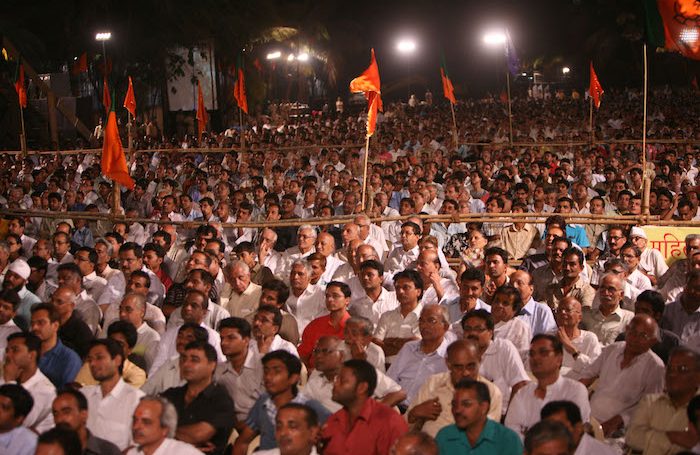
India is a subaltern state. Nationalism and communism have overlapped with one another in India in its struggle for freedom. In India, the question of secular politics has developed in tandem (and in tension) with that of religion. If explored, the concept of nationalism in India evinces a politics essentially not to be clubbed with religion, religiosity, and religiousness.
In an underdeveloped society as India had once been, the concept of parochialism and the practice of parochiality have, in turn, been used to motivate people much reliant upon various superstitions beyond the rituals. Out of that society emerged the Young Bengal Movement in Bengal led by Henry Louis Vivian Derozio to ascertain the scientific motivations of the Bengalee youth by overcoming the limitations of normative approaches, which were in many cases ungrounded. Therefore, this movement had seeds of detachment from the erstwhile traditional and parochial society. It led to the development of a new class – middle class. More or less this class provided leadership from the last quarter of the 19th century. At the same time, it had the chances of proximity with the western philosophies of rights and liberty as a part of its anti-feudal culture. But they did not appreciate the religiosity of liberalism that happened in Europe in various capacities. When they tried to apply their education excluding religiosity to their native land, it became termed as nationalism. Indeed, the idea of nationalism in India essentially grew as a part of atheism or agnosticism to some extent.
The secularism that emerged with nationalism particularly in a multi-cultural, multi-religious and multi-lingual society like India was even more accommodated by the emergence of communism, which deviated from the conviction of western liberalism and argued that the capitalists exploit the religious weakness of the ignorant people. However, at the outset, some people used to believe and tried to convince others that the inventions of the modern Europe were not unknown to the ancient India, thus, justifying a nationalist outlook in terms of Hinduism; as a result, nationalism at the early stage got associated with the Hindu revivalism.
At the later stage, because of congruence with nationalism, communism sneaked into the freedom struggle of the Indian National Congress slowly over time. Thus, it can be said that both parts of that possible binary were always in potential. However, on the side of religion, it should be remembered that there had been for quite some decades socially important and politically significant activities of Hindu Revivalism within India, simultaneously with the movements like the Aligarh Movement, which sought to revive the religious orientations of the Indian Muslims.
Interestingly enough, India’s independence took place by means of the divide and rule policy on the question of religion. The pro-partitions considered India to be the state for the Hindus, and Pakistan, to be the state for the Muslims. Many elite Muslims of the undivided India went to Pakistan when that State was established. In fact, it is opined by some schools of thought that the new sovereign State, Pakistan, had a great potential to accommodate many elite Muslims to the powerful governmental posts.
The creation of Pakistan, then, came to them as a good opportunity of directly participating in governmental affairs. Those of the Indian Muslims who remained in India, in some contrast, always wanted liberal leadership (ibid). In that respect, it was natural that they very often supported secular regimes and not BJP, except in recent past when a good number of their votes made the candidates of the once so-called communal party, Bharatiya Janata Party (BJP), win in the general elections. The more interesting finding is that the BJP has sometimes been reported to be more communally-oriented (e.g., pro-Hindu) while in opposition than when in office, as argued by Basu; this observation comes with the obvious exceptions of a few incidents, such as the Babri Masjid demolition, and the Rajasthan riot of 1990.
In due course, and recently in particular, the BJP has projected a religiously all-inclusive agenda for its electoral manifesto. At present, the central government, led by the Prime Minister, Narendra Modi, takes some measures in favour of Muslims. At the same time, most of Modi’s other reforms are broadly based upon a myriad non-religious issues, such as de-monetization, introducing GST (Goods and Services Tax) in Indian economy etc. Even in case of making policies for WTO, the BJP regime seems to have acted more judiciously (Hombal, 2017, p. 153). Thus, the BJP tries to untie itself from the communally-specific (and, thereby, possibly religious) tag by overcoming criticisms from the oppositions.
Alternatively speaking, it can be said that the present attitude of the BJP seems to have lost reliance upon community-oriented policy-making for survival in power. It now puts efforts to establish its forte by emphasising secular reforms that cover the entire population. By de-emphasising communally specific attitudes and policies, the BJP seeks to present India as an open marketplace for the new middle class, of the new middle class, and by the new middle class – who largely prefer secular perspectives to any religiously-based (or, in their view, religiously-biased) ones.
Further Reading on E-International Relations
- Secularism: A Religion of the 21st Century
- Opinion – Navigating Epistemic Injustices Between Secularism and Religion
- Opinion – How Formidable is the Rightward Shift in India?
- Opinion – Looking Behind the Delimitation Exercise in Jammu and Kashmir
- Opinion – Indian Politics in the Age of Neoliberalism
- Opinion – The Aam Aadmi Party’s Effect on Indian Politics